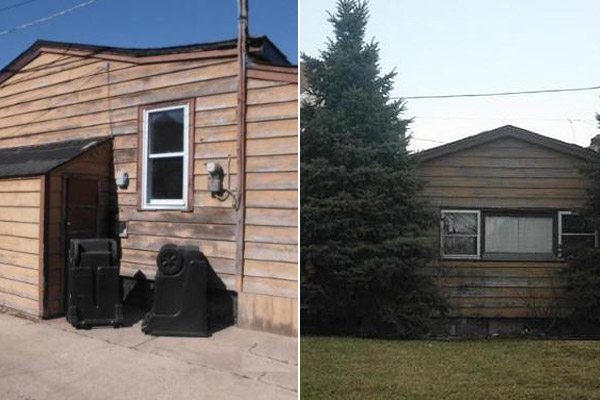
You may find yourself living in a shotgun shack (in Dunning):
It's no great surprise that Chicago's smallest for-sale single family home (for which square footage is supplied) hails from the far Northwest nabe of Dunning. Plenty of other contenders do as well…. What you're looking at here, folks, is the size of a one-car garage, and, for richer effect, it's aligned with its neighbors' garages too.
I love this house, in no small part because it's $49,600—for a modest $10,000 downpayment, a 15-year fixed-rate mortgate at 3.5 percent would be a mere $283 a month, and 2009 taxes added up to just $1,776. And Dunning has a rich history:
In 1851, Cook County thought the area was a prime spot for a poor farm/lunatic asylum (ah, the pre-euphemism days). By 1863 they started packing in tuberculosis sufferers for good measure. Gradually, the place became a catch-all for orphans, unwed mothers, sick war vets, old folks and other societal cast-offs. By the 1880s the hospital housed more than 1,000 patients, with more arriving every day on the Chicago, Milwaukee and St. Paul Railway — locally known as the "crazy train." Over the years, reports of corruption and gruesome patient deaths, in addition to persistent fears of escape by axe-wielding inmates made Dunning an unattractive place to settle down.
There's an odd little cult forming around tiny houses. Recently it made the New Yorker, which summed up the trend:
People who live in tiny houses, or aspire to, appear to fall into one of three overlapping categories. The first consists of young people who see a tiny house as a means of owning a place while avoiding property taxes and maybe rent, since they can often find places to park their house free. The second group includes older men and women who have either sold or walked away from a house they couldn’t afford. The third group is composed of people determined to live environmentally responsible lives—to live “lightly,” as they put it. The rhetoric of modern tiny-house living begins with the assertion that big houses, aside from being wasteful and environmentally noxious, are debtors’ prisons.
Alec Wilkinson's piece focuses on the straight-edge contingent of the tiny house movement—under 130 square feet, or the size of a McMansion walk-in closet, and mostly illegal. They can get smaller (84 square feet) or larger (1,000 square feet, which would mean a lot of the houses in Chicago are "tiny houses").
The appeal really depends on who you are:
“But what about the people who are just into puzzles?” I ask, hopefully. This seems like a more intellectual explanation.
I recently read a smart blog post equating the tiny home with the Swiss Army Knife. There’s just something elegant about squeezing so much utility out of something so small. Every component must be thoughtful and integrated. And a puzzler can appreciate the clever solution of turning a bookshelf into a dining table, even if you don’t want to eat on one in yourself.
For me the appeal is physical simplicity, the same reason I like my family's 20-year-old Geo Metro. The less there is, the less there is to go wrong, and the easier it is to troubleshoot. Recently I read one condo-buyer's account of a leaking balcony that required biannual contractor visits, which never fixed the problem as mildew engulfed the apartment. In a small house, it's not just cheaper to fix, it's much, much easier to diagnose. It's an appealing house on all sorts of levels, except for—personally—one: location, location, location.
Photographs: Domain Realty


